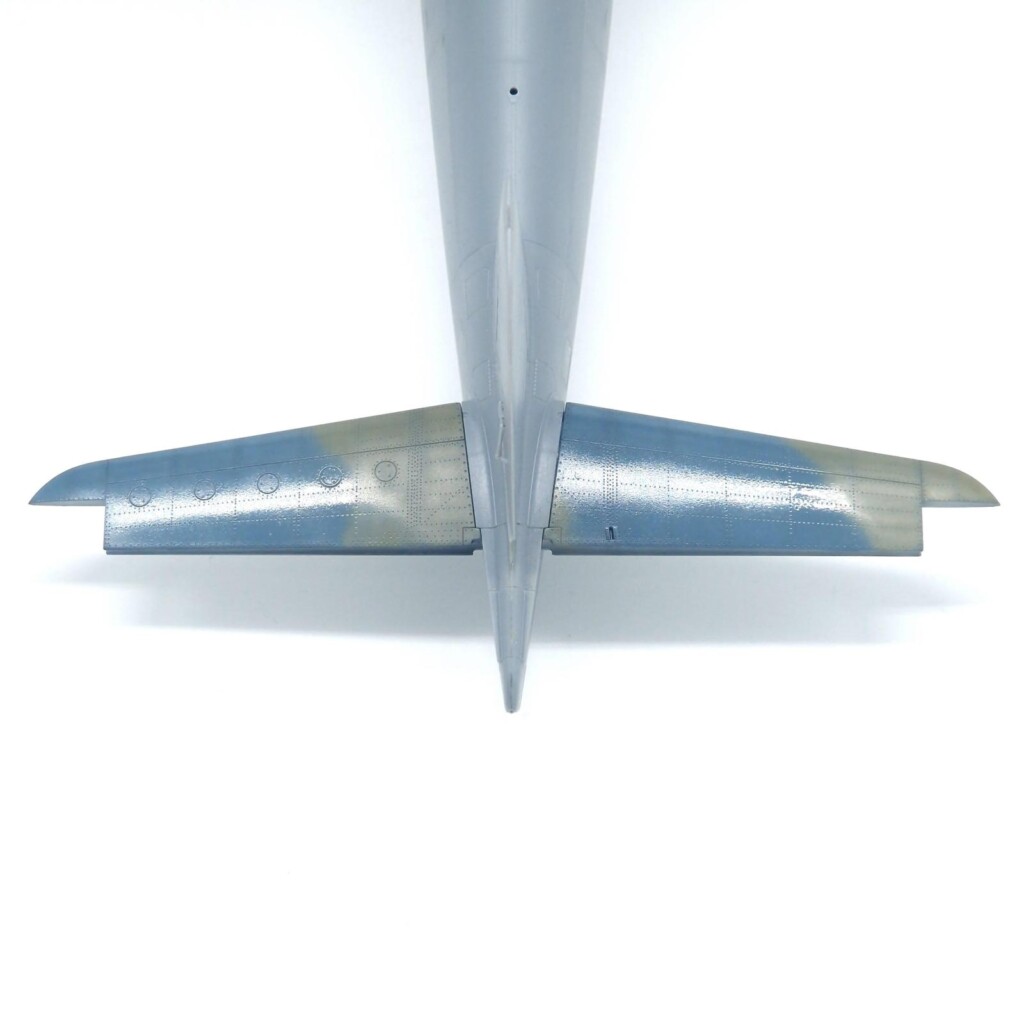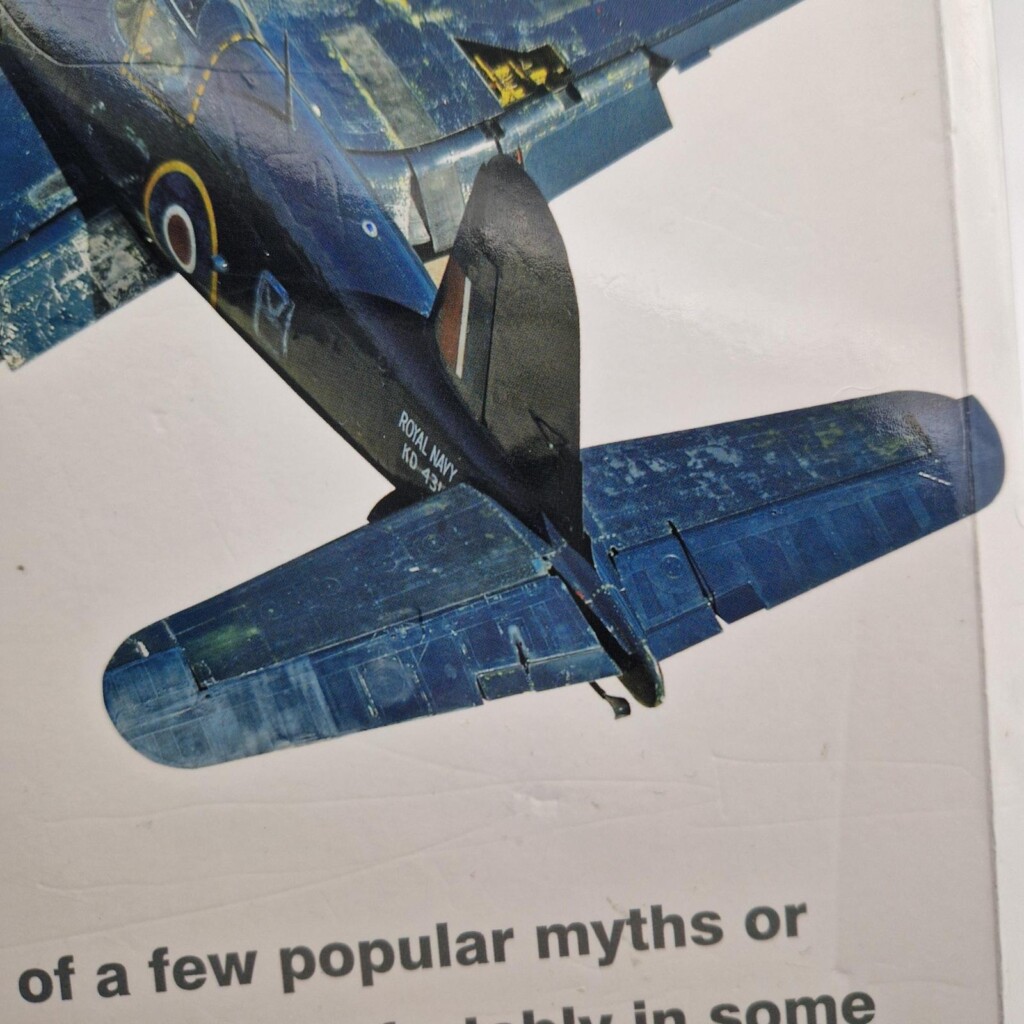Currently the model is moving towards priming, I've been wanting to get that done the last few days but got sidetracked. That being said some painting has been done, and the Corsair certainly looks more together.
Assembling the Folding Wings
With the tips sanded down to what I think is a reasonably accurate representation, the next step was to add those wings to the plane.
I found that the gap between the folding wings was a little unreasonably large on the left wing, upper and lower joins were given Mr. Dissolved Putty, and excess was removed immediately with a cotton bud soaked in Mr. Levelling Thinner. The result is that the putty is largely removed, but what remains is pushed into the gap so that there should be just enough of a surface difference to allow a wash to be visible without needing to rescribe. The parts are sprayed in grey to check, and a wash will be tested soon.
The inserted parts of the wing that fold were added and fit perfectly fine on the right wing, but issues presented on the left. I just don't think for whatever reason the left wing was able to fit as close as it should have been.
I turned my attention to making the landing gear whilst glue dried, lots of detail in this area despite the small size. These at least allow a few nice pictures to be taken now.
The Elevators
KD431, clearly, is a Sea Blue Corsair and left the factory this way. Curiously enough when the restoration was underway it was found that the Sea Blue on the horizontal stabilisers was not the lowest level of paint and in fact underneath was a factory applied scheme for the FAA camouflage. Aircraft at the time were rolling off the production line in Sea Blue, so why was this?
This is a great example of why assuming that everything was done they way it should have been doesn't always work out. Having factory applied paint would indicate that either these were unsprisingly factory fitted or they came from another aircraft as a repair. Documentation never indicates KD431 had tail damage nor does the airframe itself show signs of that, furthermore in the factory whilst the folding wings, canopy and some fabric parts were pre-painted before being attached to the aircraft, the horizontal stabilisers were not.
-

It is suggested that these parts originate in the Brewster factory which closed not long before KD431 started being built, parts that were finished as well as partially completed Corsairs were sent to Goodyear to be used. Evidence can possibly be seen in one photograph (annoyingly on a double spread) in which one aircraft in the background has a camoflauged horizontal stabiliser, whilst the one in the foreground has pre-painted camouflaged wings, no paint on the stabiliser, but a sea blue elevator.
Regardless of the exact reasoning this does mean some interesting weathering opportunities open up on KD431's tail, frustratingly two really good photos in the book of this are printed in black and white (not particularly helpful), but on the blurb shows a coloured photo where you can clearly see the grey and green peaking through the chipped blue.
-

So that brings us back to the model, these parts were first painted black with Tamiya and white preshading applied. Paints used on the real thing weren't British, but American equivalents which were close but not precise (and leads to some patchy looking service aircraft when carriers repainted areas with British paint over the American original). A mix for ANA 610 'Sky' was made using tamiya sky, a decent amount of white, and a tiny bit of flat earth. ANA 603 'Gunship Grey' is the substitute for Dark Sea Grey, and was made by mixing Tamiya RAF Ocean Grey with a bit of medium blue. Finally, the green itself is the ever reliable ANA 613 Olive Drab which I had a bottle of MRP on deck for.
-

With this done it'll recieve chipping fluid and the Sea Blue, in the future though as it will be interesting to see it against the rest of the aircraft when it's painted. On a similar vein a couple of ammunition box panels are green, presumably gained during its service which isn't too surprising as there's a lot of photos out there with aircraft using different panels. You'll find US Navy Corsairs with very weird wing stars due to these panels being from different aircraft, as well as FAA camo'd Corsairs with blue panels and vice versa.
2 additional images. Click to enlarge.